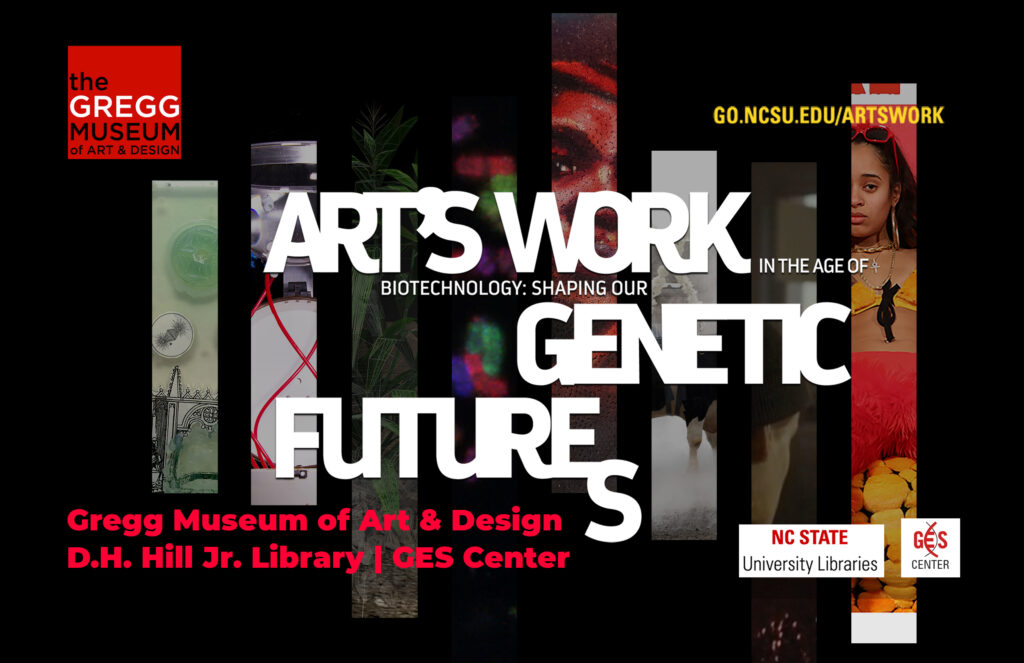Art’s Work in the Age of Biotechnology-Shaping Our Genetic Futures
October 17, 2019 – March 15, 2020
Evolution has gotten life this far.
Design may take it from here.
Artists use the lens of biotech to envision our genetic futures.
A multi-site exhibition, Art’s Work was shown at the Gregg Museum in the Black/Sanderson Gallery, in the physical and digital display spaces of the NC State University Libraries – specifically the DH HIll Jr. Library Gallery and the GES Center in the James B. Hunt, Jr. Library – and on the grounds of the North Carolina Museum of Art (until October 31, 2019).
Exhibition Wall Text:
Art’s Work in the Age of Biotechnology: Shaping Our Genetic Futures is a visually stunning and thought-provoking exhibition aimed at raising awareness about genetic engineering, biotechnologies, and their consequences through the lens of art and design. By combining science and art and design, participating artists offer new insights about genetic engineering by bringing it out of the lab and into public places to challenge viewer’s understandings about the human condition, the material of our bodies, and the consequences of biotechnology.
Guest-curated by Hannah Star Rogers, an independent curator and Visiting Scholar at the University of Edinburgh, the exhibition runs through March 15, 2020 and is organized by the NC State University Libraries and the Genetic Engineering and Society Center. Many participating artists have exhibited widely and achieved international recognition, including Suzanne Anker, Heather Dewey-Hagborg, Joe Davis, Richard Pell, Kirsten Stolle, Paul Vanouse, Adam Zaretsky, Jennifer Willet, Charlotte Jarvis, Maria McKinney, Emilia Tikka, Aaron Ellison, David Buckley Borden, Joel Ong, Emeka Ikebude, Kerasynth, Jonathan Davis, and Ciara Redmond.
Art’s Work/Genetic Futures also includes From Teosinte to Tomorrow, a quarter-acre corn maze at the North Carolina Museum of Art (NCMA) Ann and Jim Goodnight Museum Park, through Oct. 31. The maze is a conceptual walk back through agricultural history. At the center of the small stand of tropical field corn, you will find an interior room with a raised bed of teosinte, the wild grass thought to be an ancestor of modern corn. Through countless harvests, the skinny, hard kernels of teosinte grass were gradually cultivated and hybridized into today’s juicy and sweet corn on the cob. >
Following the conclusion of the artwork From Teosinte to Tomorrow by Molly Renda, William Dodge, and a host of volunteers, Art’s Work in the Age of Biotechnology: Shaping Our Genetic Futures presents a new work by Joe Davis called Joe Davis Plowed This Field (2019). >Of this work, Davis writes:
“I feel like I’ve been plowing fields of the mind and fields of the heart throughout my career…In what is probably one of my least scientific and most highly poetic works…”
